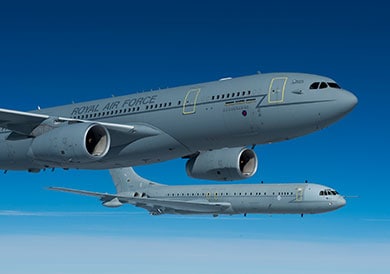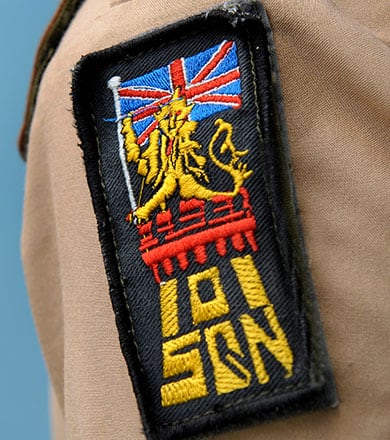Nos. 10 & 101 Squadrons
Voyager joins a near-century long list of iconic aircraft that have been in operation by Nos. 10 and 101 Squadron. Working alongside civilian colleagues, the Voyager programme brings together modern technology, capability and workforce to the Squadrons, strengthening their role in support of RAF operations around the world.
No. 10 Squadron
Formed as a squadron of the Royal Flying Corps at Farnborough on 1st January 1915, No. 10 Squadron carried out reconnaissance and ground attack missions throughout the First World War.
The inter-war years saw the Squadron transfer to numerous bomber types, culminating in the Armstrong Whitworth Whitley at the outbreak of the Second World War.
Following a number of decades under Bomber Command, No. 10 Squadron began its transport role from 1966 on the new VC10. This lasted until 2005, seeing out numerous operations around the world.
They joined Voyager in 2011 as the first squadron to operate the type.

No. 101 Squadron
Founded at Farnborough on 12 July 1917 during the First World War, No. 101 Squadron saw action over the battlefields of France within weeks of its formation. Later playing a pivotal role in the Battle of Britain, carrying out attacks on invasion barge concentrations in the French Channel ports and on enemy bomber airfields.
They became the RAF’s first jet bomber unit with the delivery of its first EE Canberra B2 in May 1951, seeing action this time over Malaya and during the Suez Crisis in October 1956.
Following action in the Falklands conflict the Squadron took up a new role in May 1984 at RAF Brize Norton as a VC10 tanker Squadron, supporting operations during the Balkans Conflict through to operations in Iraq and Afghanistan.
‘101’ began its new era on Voyager in 2013, and has formed the final of the two Squadrons to operate the aircraft.

